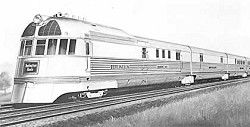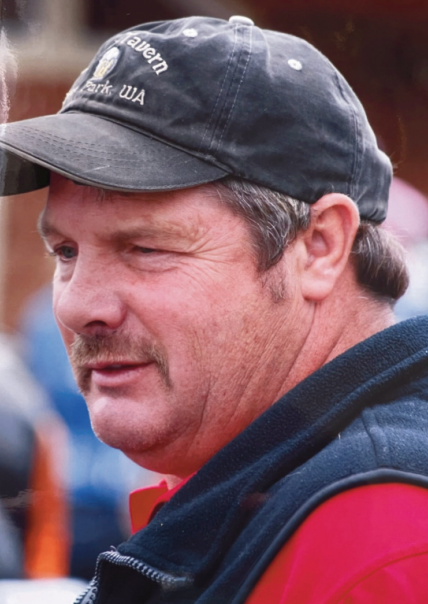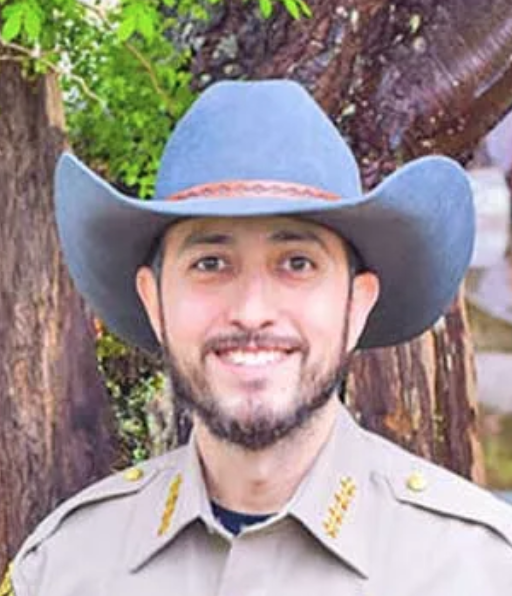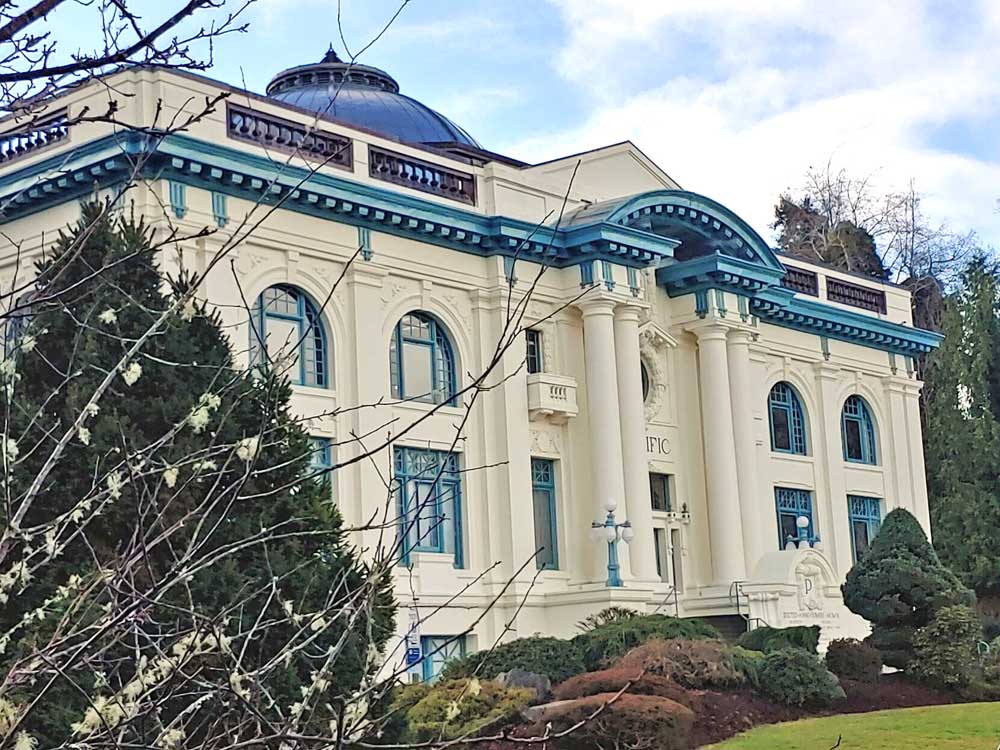Seaview Stories: A tale of two Zephyrs
Published 4:00 pm Tuesday, January 29, 2008

- Seaview Stories: A tale of two Zephyrs
I have written about trains and railroads several times before on these pages, including a story about growing up in a family of railroaders in Illinois, and another about a memorable ride from Chicago to the Pacific Northwest on one of the most famous passenger trains in American history, the Empire Builder on the Great Northern Railway.
Trending
Four years ago I wrote another story for the Observer about several railroad topics, including the Peninsula’s own Clamshell Railroad and the term “foamer” sometimes applied tongue-in-cheek to obsessive railroad fans – as in foaming at the mouth.
That story also had some family history about railroads and railroading. My father and maternal grandfather both were longtime employees of the same Midwest railroad, the Chicago, Burlington & Quincy, otherwise known as the Burlington Route, and railroading is in my blood.
Today we offer a story that could be called “A Tale of Two Zephyrs” to borrow part of a title from the classics. The two Zephyrs were famous and speedy American passenger trains of yesteryear, appropriately named for the legendary westerly winds called Zephyrs. These two streamliners made railroading history in different eras.
Trending
One of the trains, the Burlington Zephyr, was the first true streamliner built in America. The original Zephyr, the first of nine in the famous Burlington fleet, carried its first passengers in the Midwest in 1934. The other Zephyr streamliner we will introduce today is the equally famous California Zephyr, which ruled the Chicago-to-California market in the 1950s and ’60s. The California Zephyr is the favorite train of a model railroad fan here on the Peninsula, Mark Clemmens, who lives near Oysterville.
Clemmens has a miniature railroad layout in his large garage, where he runs his model of the California Zephyr.
Because of my family history, I am more familiar with the Burlington Zephyr. The Burlington Route built a formidable and distinctive fleet of nine Zephyrs in the mid-1930s – sleek gleaming stainless steel trains called Silver Streaks. The Zephyr locomotives had a unique “shovel nose” design, sharply inclined to keep wind resistance to a minimum. My father and I had the thrilling good fortune of riding a Zephyr on a trip to Minneapolis-Saint Paul and back to our hometown in Quincy, Illinois.
Over the years I have collected bits and pieces of memorabilia about the Zephyrs, and recently I looked on the Internet for more. I found lots of information, mostly historical, including the following facts – probably of interest mostly to die-hard railroad fans.
The Burlington Railroad christened its first Zephyr in April 1934. Then, seeking maximum publicity and with appropriate fanfare, the railroad arranged a record-setting Denver-to-Chicago speed run on May 26, 1934.
The Zephyr rumbled over the 1017-mile route at sustained speeds of 90 miles per hour, averaging nearly 80 mph for the run, a speed for trains unheard of before then.
The Zephyr hit a record top speed of 112 miles per hour in one stretch, and pulled into the Chicago station in 13 hours and 5 minutes, breaking the record for the longest non-stop run at the fastest average speed.
The Burlington Zephyr’s record run made national headlines and ushered in a new era in railroad transportation, cutting 12 hours and 40 minutes from the running time of the railroad’s crack steam train on the Denver to Chicago route. The record time was one hour and 55 minutes better time than was expected by Burlington officials when the trip first was planned.
The railroad took special precautions to assure safety on the high-speed run. Passenger train traffic along the entire route was sidetracked. Freight trains also were delayed and switches were spiked to prevent tampering. At each station along the route, where crowds gathered to see the speeding Zephyr zip through, the track was guarded by local law officers, posts of the American Legion and Boy Scouts.
A crowd estimated at 100,000 at the Chicago World’s Fair cheered enthusiastically when the Zephyr reached the Chicago station, wound its way over tracks in the city and appeared on Chicago’s lake front. Some in the crowd covered the train’s track with pennies to be mashed as souvenirs by the train wheels.
Before we leave that record run, here’s an interesting fact relating to the high cost of gasoline and diesel fuel today. To fuel its 660-horsepower diesel motor, the Zephyr carried a fuel supply of 600 gallons of oil for the record-breaking run. In those days the oil cost 4 cents a gallon, and the total fuel bill for the Denver-to-Chicago run – 1,015 miles – was a miserly $17. Go figure.
Each Zephyr was named, such as the Pioneer Zephyr and the Mark Twain, and each car of each train also was named. On the Mark Twain Zephyr the cars were named Injun Joe, Becky Thatcher, Tom Sawyer and Huck Finn.
Besides the pictures and other mementos of the Burlington Zephyrs I have saved, I treasure a valuable keepsake from that era. As a memorable Christmas present in 1935 I received an electric model train, an authentic replica of a Burlington Zephyr that survived the years and still zooms around our Christmas tree every holiday season.
My Zephyr locomotive needed some repairs recently, but a talented member of a model railroad club in the Portland area had the proper parts and the know-how to get my model Burlington Zephyr running again.
The Zephyr fan here on the Peninsula, Mark Clemmens, owns a beautiful and realistic model of the other famous Zephyr that made railroading history, the California Zephyr.
Clemmens said he got his first model railroad set when he was in junior high school. “That set eventually wound up packed away in a box and I didn’t get back into model railroading until I retired,” he said.
Clemmens said that once he got the model railroad bug again, he picked the California Zephyr because of its history and, besides, the model is “a good-looking train.”
That famous passenger train served the Chicago to California market from 1949 to 1970, when Amtrak took over the route. At its peak this Zephyr was heralded as “America’s most talked about train” – recognized by railroad historians as one of the most famous passenger trains in the history of North American railroading. The California Zephyr was unique in that three different railroads shared ownership of the train and divided the responsibility in moving it along the tracks to its destination.
The Burlington operated the train from Chicago to Denver, where the Denver and Rio Grande Western took over between Denver and Salt Lake. The Western Pacific then took the train from Salt Lake City to Oakland, California. Like the Burlington Zephyrs that came before, each car on the California Zephyrs had distinctive names, all with a “silver” preface – Silver Mustang, Silver Beaver, Silver Scout and so forth.
The California Zephyr was a luxurious streamliner running from Chicago to the Bay area through some of the most beautiful scenery in the country. Like a silver ribbon, its five dome cars provided the perfect balcony for the show of vistas, canyons and tunnels along the route.
The California Zephyr owned and prized by Clemmens is an N-scale model he operates at home and at meetings of the Peninsula Model Railroad Club. The club meets every first and third Monday, and one of these days I’d like to give my Zephyr a tryout on the model club’s local tracks.
To get back to my long-time interest in the Burlington Zephyr, why did I want to gather even more information about that train?
Well, one reason is the very best pastrami sandwich to be had in the Portland area. You may ask what a streamlined passenger train has to do with a tasty pastrami sandwich, and here’s how the two are connected:
In my biased opinion, the purveyor of the best pastrami sandwich in the area is a mellow fellow named Chuck Wilson, who owns the Beaverton Sub Station Deli in downtown Beaverton, Ore., just west of Portland.
The Beaverton Sub Station is a special place, especially for hungry railroad fans. Besides offering good food, the deli’s walls and shelves are covered portal to portal with an impressive collection of railroad memorabilia, much of it provided by customers. Pictures and drawings of trains of all shapes and sizes, models, toy trains, whatever – you name it and Chuck Wilson has it displayed at the Beaverton Sub Station.
Adding to the atmosphere of the place, there are railroad tracks just a few yards in back of the deli, with occasional freight trains rumbling by.
It’s always fun to check out the railroad displays while enjoying a leisurely and tasty deli lunch. I crave Chuck’s pastrami sandwiches and I patronize his deli every so often to partake thereof. Always, pastrami on whole wheat with everything.
There was just one problem. The Sub Station did not display any photos or mementos about the Burlington Zephyr, my favorite train and the nation’s first true streamliner. Not one solitary item. Nada. How could that be?
So naturally I took it upon myself to rectify the situation. Hence the Internet search for more Burlington Zephyr background, which turned up more information than I could use.
I chose a nice colored photograph of a Burlington Zephyr, which we enlarged on our computer scanner. I wrote a caption for it describing the record 1934 speed run from Denver to Chicago with all the details, especially for all the rail-fans who frequent this deli but who might not be familiar with the Zephyr.
Then my wife mounted the photo and caption in a special frame and I presented it to Mr. Wilson on my next visit. I’m not sure whether there’s enough room left on his walls to hang it, though.
So there you have it – a story about two famous Zephyr trains that might appeal to dyed-in-the-wool railroad fans (especially the foamers (and you know who you are) and to other folks who like tasty pastrami sandwiches on whole wheat, with everything.









